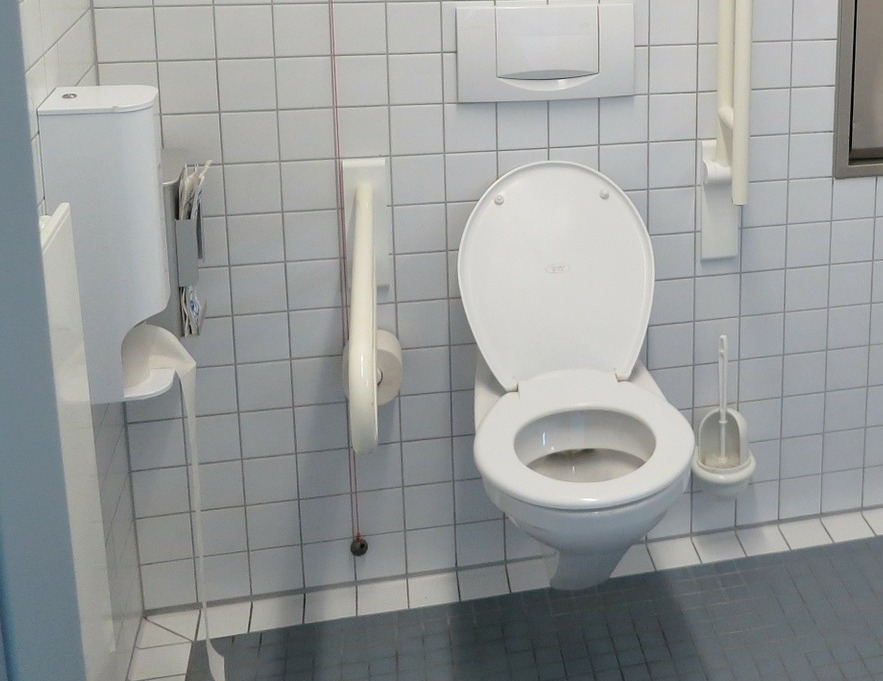Wall hung toilets
Wall hung toilets are becoming an increasingly popular option for those looking to create contemporary style bathrooms in their homes or even on their business premises. Compared with their more conventional counterparts, wall hung toilets can offer a number of practical benefits.
Wall hung toilets are perhaps best known for the unique look they have. With a concealed cistern in the wall and a toilet bowl seemingly ‘suspended’ above the floor, they can appear very different to the traditional floor-mounted toilet that many of us are used to.
The suspended design lends itself very well to the easy cleaning of the bathroom or WC where the toilet is placed as it is simple to clean under and around the wall hung toilet. In addition to the suspended design, many wall hung toilets have sides which are very easy to wipe clean, with no difficulty in accessing any nooks and crannies that may be hard to reach with cleaning products. These two factors combined make for a more efficient cleaning process and improved hygiene standards.
The design of the toilet also lends itself to a better use of space. As the toilet is generally not very bulky, it makes a good space-saver and can be placed closer to other furniture, a shower enclosures or a sink. This means that the wall hung toilet can be a good option for small and narrow spaces, allowing for the placing of a toilet in an otherwise awkward area. This can make wall hung toilets ideal for that downstairs water closet or in a small bathroom where many items of bathroom furniture need to be placed in a practical fashion.
The fact that the wall hung toilet is not cluttering up space and that it is easily slotted in next to other bathroom fittings also creates the illusion of a more spacious area.
Another advantage of the wall hung toilet is that it can be hung at any height required. Whereas floor-mounted toilets are generally only available in one height. This can bring benefits fro those with certain physical conditions, or those who simply have a desired height for comfort or design reasons.
The final factor that makes wall hung toilets a particularly advantageous element in a bathroom is the ‘wow’ factor that they have. Although increasingly popular, the wall hung toilet is not yet commonplace, and can add a unique touch to any bathroom whether in a home or a public establishment. The wall hung toilet has a clean and modern design that adds a touch of class and luxury to a bathroom, making it perfect for homeowners wishing to achieve this effect. The design also matches well with other contemporary features in the home and is complemented by other modern fittings such as frameless shower enclosures.
The disadvantages of wall hung toilets include the fact that as they are suspended, they can require a concealed framework to support them, which can be difficult to instal. Creating the space for the frame and for the concealed cistern can mean that more than one trade is required, wheras installation of a conventional toilet may only require plumbing skills.
In addition, as the cistern and connections are concealed, they can be difficult to access for maintenance and repairs, even with the inclusion of an inspection hatch. If the cistern or frame need to be replaced, this can involve cutting a hole in the wall and then reparing it.
It is also more likely that problems will go undetected, allowing damage to build up before it is noticed, for example if there is a leak.
[edit] Related articles on Designing Buildings
Featured articles and news
The UK's Modern Industrial Strategy: A 10 year plan
Previous consultation criticism, current key elements and general support with some persisting reservations.
Building Safety Regulator reforms
New roles, new staff and a new fast track service pave the way for a single construction regulator.
Architectural Technologist CPDs and Communications
CIAT CPD… and how you can do it!
Cooling centres and cool spaces
Managing extreme heat in cities by directing the public to places for heat stress relief and water sources.
Winter gardens: A brief history and warm variations
Extending the season with glass in different forms and terms.
Restoring Great Yarmouth's Winter Gardens
Transforming one of the least sustainable constructions imaginable.
Construction Skills Mission Board launch sector drive
Newly formed government and industry collaboration set strategy for recruiting an additional 100,000 construction workers a year.
New Architects Code comes into effect in September 2025
ARB Architects Code of Conduct and Practice available with ongoing consultation regarding guidance.
Welsh Skills Body (Medr) launches ambitious plan
The new skills body brings together funding and regulation of tertiary education and research for the devolved nation.
Paul Gandy FCIOB announced as next CIOB President
Former Tilbury Douglas CEO takes helm.
UK Infrastructure: A 10 Year Strategy. In brief with reactions
With the National Infrastructure and Service Transformation Authority (NISTA).
Ebenezer Howard: inventor of the garden city. Book review.
The Grenfell Tower fire, eight years on
A time to pause and reflect as Dubai tower block fire reported just before anniversary.
Airtightness Topic Guide BSRIA TG 27/2025
Explaining the basics of airtightness, what it is, why it's important, when it's required and how it's carried out.
Construction contract awards hit lowest point of 2025
Plummeting for second consecutive month, intensifying concerns for housing and infrastructure goals.
Understanding Mental Health in the Built Environment 2025
Examining the state of mental health in construction, shedding light on levels of stress, anxiety and depression.






















